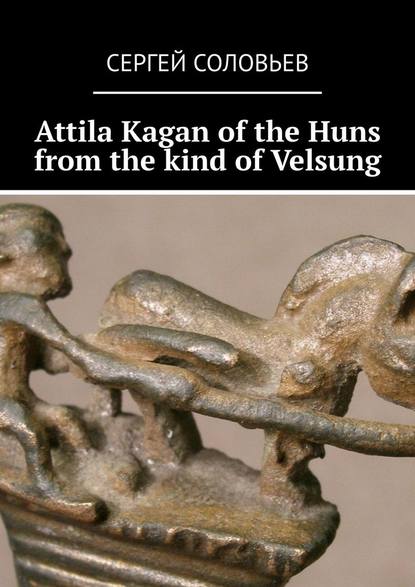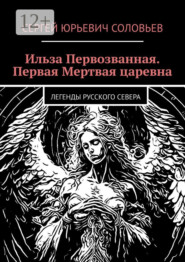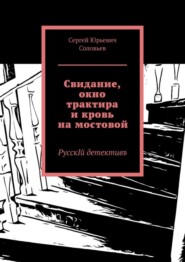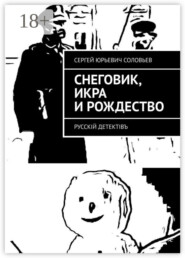По всем вопросам обращайтесь на: info@litportal.ru
(©) 2003-2024.
✖
Attila Kagan of the Huns from the kind of Velsung
Настройки чтения
Размер шрифта
Высота строк
Поля
The vessels of bronze with the eyes of the Sarmatians and the inhabitants of the Yamal Peninsula are identical.
Bronze vessels with eyes, from left to right: Yamal, 1—2c. Kuban, Sarmatian culture 1—2 centuries AD
It is no coincidence in this series of myths and Indians. About the army of Shiva, who was called the Gans, Ganapati (Ganesha) was considered the leader of this sacred army. God’s warrior Skanda, he is also known as Kartikkeya, is considered to be his double, and according to legend, the Indo-Aryans came from the North, and this is evident from the similarities between the descriptions of Apollon Illos (Ullis) and Krishna, and judging by the toponymy of the region, from the region between modern Vologda and the Yamal Peninsula.
Pendant in the shape of a snake biting its tail. III millennium BC
GIM, Moscow.
On Yamal, the first finds of the remains of people of a European type were recorded in 1935. The oldest find is dated 1—2 century AD (treasure of various valuable things). Mummies of people, Caucasoids were found (these are mummies, preserved in permafrost, they still preserved red hair from human remains) buried in birch bark coffins with household items, and many richest finds were found, the most famous of which is a silver dish with the image of the ascension Alexander the Great. The legends of the giants living on the northern islands are also transmitted by Adam of Bremen in the Slavonic Chronicles. According to him, the friezes reached the island in the Far North, hidden by fog and fenced off on all sides by mountains, and the island is inhabited by giants living in caves, and in there were many treasures, some of which the Friesians managed to steal.
Ascension of Alexander. A find on the Yamal Peninsula. Hermitage Museum
As can be seen from the foregoing, the Ghana-Huns-Huns are identical, and judging by the legends of different Indo-European and Finnish peoples, they are servants of the gods (Attila the God of God), one of the cult attributes is the worship of a snake (dragon), they are characterized by the burial of the mound type (and cremation and inhumation), women wore temporal rings of the Volyn type, as well as snake-shaped jewelry. And the historical Huns, at least part of them, were not of Mongolian origin at all, and came from the territory of the Russian North, and more than once. Their habitat was highly revered by the surrounding peoples, so there are many finds of Iranian and Byzantine origin, confirming this.
The place of the exodus of the Indo-Europeans and the emergence of ancient cults
The location of the ancestral home of the Indo-Europeans has always been a stumbling block for the scientific community and I would like to give a number of arguments for the primary habitat in the Ob-Yamal, Pechora, Arkhangelsk and Vologda regions and the islands of Novaya Zemlya. What makes it possible to come up with such an unconditional opinion? This geographical reference to this area is due to myths and tales of Ganesha, Skanda, Indrik-beast. No one can argue that this is the closest place to the European part of the continent where the remains of mammoths are massively found, and one of the most famous is Yamal, and the most famous find is the Yamal mammoth Masha (Tikhonov A.N., Khrabry V.M. Mammoth from Yamal, journal Nature. 1989. No. 6 P. 47)
So. What kind of beast is Indrik, and what evidence of him remains? In the Russian apocrypha, especially in numerous versions of the “Spiritual Verse on the Pigeon Book”, the name of this beast is in various forms: Indrok, Indra, Kondryk, Beloyandrik, Vyndrik, Unicorn, Unicorn and Unicorn. Name options can be summarized in two:
Indrik and Unicorn (the name White is also important):
Beast mother to all beasts…
And he was digging with his horn mother cheese to the earth,
Dug the keys all deep,
He took out all the boiling water.
This beast lives over the ocean-sea,
And he walks here through the dungeon…
Passes all the mountains of white stone,
Cleans streams and grooves,
Skips rivers, cold fountains…
The Pigeon Book
In different lists of the verse about the Pigeon Book there are various features in the image of Indrik, but in all he is called “father to all beasts.” He walks the dungeon, “skips rivers and lodges, or lives on Tabor Mountain (that is, Mountain of Light,” “when he turns around, all the animals worship him.” Or he lives on the Holy Mountain, eats and drinks from the Blue Sea He doesn’t hurt anyone. Or he walks through the dungeon like a “sun through the skies.” The “Pigeon Book” is a collection of East Slavic folk spiritual poems from the late 15th and early 16th centuries, the questions and answers of which provide information about the origin of the world. The book united both Christian and pagan motives. the tragedy of the schism in Orthodoxy, and was preserved among the Old Believers. According to Russian folklore, Indrik is endowed with the features of the owner of the water elements, springs and founts, and acts as an adversary of the snake. Indrik, as the owner of the water element, is close to the mythical bird Syrin – the symbol of water and fertility. Images of Indrik are often combined with a “wicker”, which in ancient times means water. Often, in the works of folklore, the “homeland” of Indrik the beast is called – full of wonders of the Indus-land – India, which is not accidental, but Indium was somewhat in the history of Indo-European migration, and one was later described by Herodotus in the Caucasus as Sindika, an area in the Kuban region.
“And somewhere it would be audible for a fool to live,
Yes stupid to live, unreasonable?
And where, you hear, there is an Indian Earth,
Is the land of turkey all rich?
Like a lot of gold-silver there,
Yes, for more of that good pearl.
In the Indian land, the steppes are wild,
The steppe is wild, the forests are dark.
Yes, Indric the beast lives in those forests:
It’s all pearly,
And the tail mane is gold-plated,
And his hooves are all damask
From his nostrils fire burns,
Smoke emanates from his ears.
He runs to drink in the Tarja River,
He runs, runs – the whole earth trembles.”
Here, one can see that Tarja River is mentioned as the place of the ancestral home of the Indo-Europeans, which remained with the Hellenes in the form of Tartarus, as one of the places of the country of their ancestors.. Researchers have established the indisputable connection of Indrik the beast with the Vedic and Hindu deity Indra, and his weapon – a vajra, and a wahana (bearer) is the elephant of Ayravat, which also brings him closer to Ganesha, and on whose behalf the name of the country – India, and the sacred river – Indus, and the people – Indians, and religion – Hinduism are formed. And in the Russian North, many names of rivers with the most ancient common Indo-European root “indus” are still preserved. For example, the Indiga river, these are the river basins between the Pechora and Mezen rivers, the river flows into the Barents Sea, and one of the Indigi tributaries is the VREYA river (and it is known that Iriy-Vyriy is the name of the Kingdom of Heaven in Slavic myths). from Yamal, west of the Ob, in the same administrative district. The presence of places with the sacred name “Ida” in the Russian North is also interconnected. Ida is a village in the Babushkinsky district of the Vologda Oblast of Russia, Ida, the sacred mountain on the island of Crete, Ida, the sacred mountain of Troy, Ida, a river in Siberia, a tributary of the Angara. Ida, a river in Russia, flows in the Vologda and Kostroma region, Ida, a river in Slovakia. And of course, one cannot forget the legend of Idawell Field. Idavall or Idavallen (dr.-Scandinavian. Iðavöllr; Swedish. Idavallen; English. Idavoll) – in Scandinavian mythology – the plain on which the aces lived and had fun.
Scientists suggest that in the era of the ancient Indo-European ethnocultural community, Indra was the single supreme god of the Indo-Europeans. After the collapse of the Indo-European conglomerate of tribes and the departure of the Aryans from the North to the Hindustan peninsula, the memory of the Pre-Slavs, and subsequently of Russians, preserved one of Indra’s many hypostases – “Tsar of animals”, “to all beasts of the mother”. “A brief description of the people of Ostyatsky,” Novitsky says: “Some people who want to confirm the story for authenticity describe it in this way: it’s three arshins long, almost arshins long, its legs are like a bear’s, its horns are folded crosswise, and when digging caves, then it bends and stretches like a crawling snake. Some, contrary to this, argue that these bones belong to unicorns or some other marine animals, during the Noah’s flood they were applied and dried up on the ground with water, but they left the land in antiquity. “And the beast Indrik appeared. And the beast Indrik became the father of all the beasts, the beast of all the beasts. The beast Indrik himself is blue, and his eyes are golden. And maybe the beast Indrik turns into a mighty blue warrior. His eyes are golden, he shines with the blue radiance of inner light, he holds a stone club in his hands, and he is dressed in stone armor. And he is so huge, above the mountains he is underground. The beast Rides the Indrik giant the underground warrior through the underworld in a stone chariot.The wheels of the chariot are huge stone millstones, and monstrous black stone dogs, giant dogs, are harnessed to that chariot. And the eyes of those dogs burn like the lights of a thousand bonfires. And those dogs roar like a thousand thunders. And those dogs breathe fire and smoke. The beast Rides Indrik the giant underground warrior in the underworld in his chariot. And he fights with lizards and dragons underground. But the Underground Lizard creeps away from it into its hell. And he closes his hell on the copper door. “Throughout the Russian North and even further – in Manchuria and China – legends about a strange creature of unprecedented growth named indrik-beast are widespread. He is supposedly the size of an elephant and endowed with horns that perform the function of an earth-moving device. Descriptions of the giant mole named tin-shu or yin-shu (“the mouse that hides”) we find in ancient Chinese books. Despite the hyperbolic dimensions of the incredible beast, it should be recognized that folk art is by no means a baseless fantasy. Life and real observations gave storytellers for this legend quite reliable material.
As said, this creature lives in the earth. It digs passages and tunnels with its horn and thereby opens the keys, cleans the springs and fills the lakes and rivers with water. And if the indrik-beast rises under the ground, “the whole Universe will shake.” True, this is not a predatory beast, but a completely peaceful giant: “it does not offend anyone”, apparently eats plants or whatever it finds underground. Well, it is quite possible that in this case we are talking about real mammoths, whose tusks and frozen carcasses are often found in Siberia. Apparently, the legendary mole-giant tin-shu, and fan-shu, and indrik-beast, and the Finnish mamut are one and the same creature. The modern Russian name “mammoth” just comes from the old Russian word “mamut”. The Russians borrowed it from the Finnish tribes inhabiting European Russia. In many Finnish dialects, “ma” means “earth,” and “mut” means Finnish “mole,” meaning Mamut is an earth mole.
“The mountain gave birth to a mouse” is a saying in ancient Greece and Rome. What does it mean? Apollon —Sminfei, Sminfey (Σμινθεύς), in Greek myth-making, the epithet of the god Apollo in the north-west of Asia Minor in Troas. The very name Cminfey is derived from the word αμίνθος, which meant a Cretan mouse. In this regard, the mouse was an attribute of the prophetic god Apollo, hence the name of it ζωον μαντικώτερον (prophetic animal). One of the months (Σμίνθειον) was named by the name of Sminfey; in addition, ancient Greek authors mention the Rhodes festival of Sminfey. Pisarevsky writes that “The mouse in the cult of Apollo with Asclepius corresponds to the mole in the cult of Rudra with Ganesha” [Pisarevsky c / 5] (The legend that the elephant fears only the mouse).And if you examine further, then Ganesha and Indrik are also identical, the message about one Ganesh horn is interesting.. So, one tusk from Ganesha is Indrik (probably Apollon-Sminfey) and what is this tusk horn? Look at the curved swords of the Hittites daggers, Danish swords from Rorbi, the Sejm culture. And the image of the Hittite deities is shown with a curved sword, and the Danish sword is generally not a weapon, it is a ritual object, and most of all resembles an elephant’s tusk.
Swords from Rorbi, Denmark.
While irrigating a plot of land in Rorby, western Zealand in 1952, Torvald Nielsen discovered a curved bronze sword covered in ancient images. The sword was dated to the beginning of the Bronze Age, (around 1600 BC), and was at that time the first such sword found in Denmark. Thorvald Jensen, five years later, in the same place, while working in the garden, accidentally dug another curved sword. The found sword, like the first one, was covered with a pattern, and there was an image of an ancient ship with two pins. This is the oldest ship image in Scandinavia. These are also the most ancient metal swords found in modern Scandinavia. But these artifacts cannot be called weapons; they have never been imprisoned. The Hittites, a people in Asia Minor, had the same type of sword. Judging by the images on the bas-reliefs, similar swords were worn for ritual purposes by both the Hittite rulers and deities, according to the book of O. Henry “The Hittites” p. 201.
Among the monuments of the Sejm-Turbino culture, among the exhibits of the State Historical Museum of Moscow, there is a curved dagger, which, obviously, was used for ritual purposes.
Seima-Turbino culture. GIM, Moscow.
Twisted dagger, Relief depicting a Hittite deity. Turkey.
Of considerable interest is the sanctuary of the Kaninsky cave in the Trinity-Pechersky district of the Komi Republic. A feature of this place is the presence of traces of the activity of two cultural horizons: Seima-Turbino and medieval. In addition, single tools of the early Iron Age were found in the cave. In the cave, 41 damaged objects made of metal of the Seima-Turbino type were found. That is, the sanctuary has been used continuously for thousands of years.
Probably all of these ritual curved swords and daggers served as an attribute of worship of the gods, and not for military purposes. And the similarity between them is obvious, it is likely that these objects copied in some sense the Horn of Ganesha (Indrika), because the deity had only one horn, according to myths. And in Russian, the origin of the weapon from the Horn (the word Horn) remained, and in Latin from the word hand-armor (that is, the Romans thought the weapon was a continuation of the hand). It turns out that the horn of Indrik (Ganesha) was presented as a sacred object, a sacred weapon (probably, as in the sense of the Sungir burial, a weapon from a mammoth tusk was considered magic), and this probably explains the use of ivory for the hilt of weapons in later times. That is, the migration of Indo-Aryans from the coast of the Arctic Ocean is proved by the toponymy of places, the location of mammoth burial grounds in that region, and the emergence of myths about Ganesha, Apollon and Indrik-Zvere, in the areas of the Ob river basin, and the present Arkhangelsk, Vologda regions and the Komi Republic, and Khanty-Mansiysk Okrug, where even now there are cases of finds of the remains of mammoths. Also, numerous finds of the most valuable artifacts in the Yamal region and the mouth of the Ob river, as well as in the region of the river. Later Kama, the so-called “Zakamsky silver”, which was most likely the offerings from Iran, Byzantium to the sanctuaries of the Far North, described by Herodotus, who considers these places to be connected with the veneration of Apollo, and Herodotus gives evidence of Aristean who visited the High North in fulfillment vows. That is, the tradition, the recollections of the ancestral home, already at a later time turned out to be so strong that offerings to the gods to the ancestral home of the Indo-Europeans were sent from Iran and Greece, to which there is material evidence, these are the treasures of Yamal and Zakamsky treasures.










